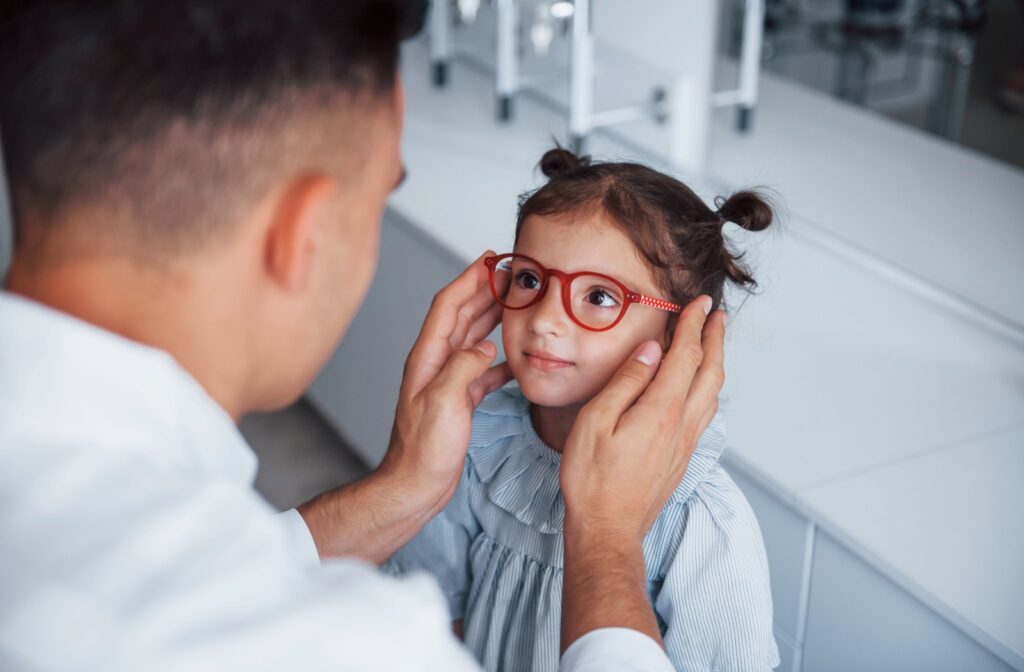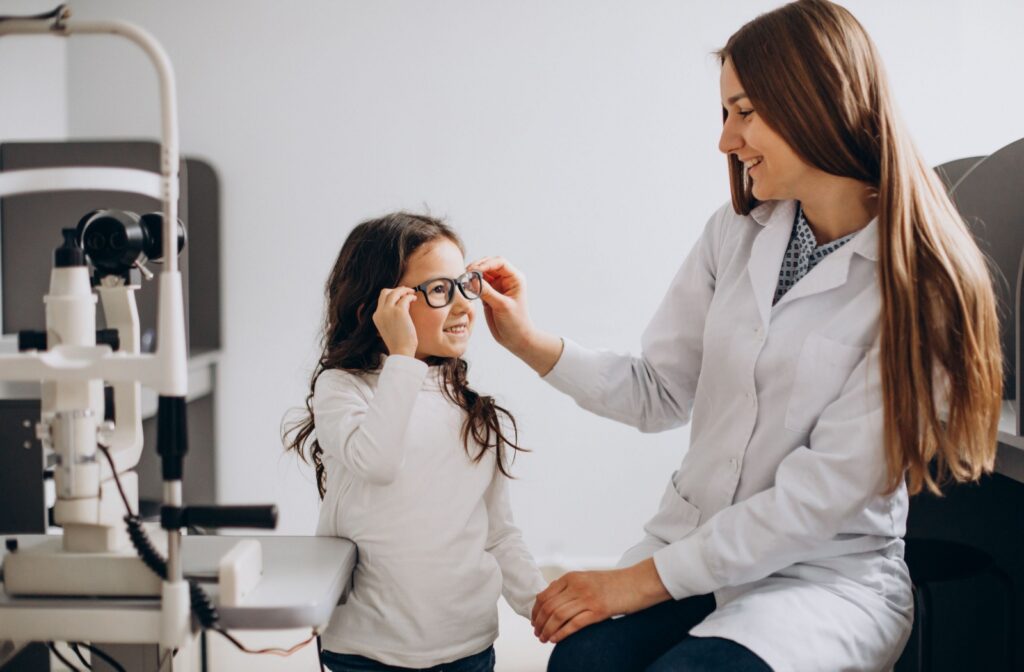Do you notice that things far away, such as the board in a classroom or a street sign, might look a little fuzzy? This is common, and it’s called myopia or nearsightedness. It just means the eyes focus better on things up close than on things at a distance.
Vision can change over time, especially at a young age or when spending a lot of time on digital screens. Myopia often progresses due to a combination of genetics, environmental factors, and visual habits such as prolonged near work and increased screen time. Our team provides personalized vision care, and we’re here to explain why myopia happens and explore how you can keep your child’s vision sharp.
What Is Myopia?
Myopia, or nearsightedness, is a common vision condition where nearby objects appear clear, but distant objects look blurry. This happens when the eye is too long or the cornea is too curved, causing light to focus in front of the retina instead of directly on it.
It’s not something you or your child did wrong; it’s just how the eyes have grown. Many people have myopia, and it’s often discovered during childhood or in early adult years. Simple vision correction can help your child see clearly again.
Why Myopia Progresses
Several factors can contribute to worsening myopia:
- Genetics: Children with one or both parents who are nearsighted are more likely to develop and experience progression of myopia.
- Near work activities: Spending long hours reading, using digital devices, or doing other close-up tasks can increase strain on the eyes.
- Lack of outdoor time: Studies show that children who spend less time outdoors are at higher risk of developing worsening myopia. Natural light and looking at distant objects appear to play a protective role.
- Eye growth: Myopia progression is often tied to the lengthening of the eyeball, which typically occurs during a child’s growth years.
Understanding these risk factors is key to managing and slowing the progression of nearsightedness.
Myopia Treatment Options
While myopia cannot be reversed, several treatment options are available to slow its progression and protect long-term eye health.
Soft Multifocal Contact Lenses
Specially designed multifocal contact lenses help reduce strain by creating different zones of focus. This design not only corrects vision but also helps slow the progression of myopia in children and teens.
Orthokeratology (Ortho-K)
Ortho-k lenses are worn overnight to gently reshape the cornea while you sleep. During the day, patients enjoy clear vision without the need for glasses or contacts. Ortho-k has been shown to effectively slow eye growth and myopia progression in children.
Atropine Eye Drops
Low-dose atropine drops, prescribed by an optometrist, have been clinically proven to reduce the rate of myopia progression. They are a safe and noninvasive option, especially for children who may not be ready for contact lenses.
Each treatment option works differently, and the right choice depends on factors such as age, lifestyle, and eye health. An eye exam can help determine which approach is best.
Why Managing Myopia Matters
Slowing down myopia progression is more than just keeping prescriptions from getting stronger. Higher levels of myopia increase the risk of serious eye conditions later in life, including:
By managing myopia early and effectively, patients can protect their long-term eye health and reduce the likelihood of complications.

FAQs About Myopia Progression
At what age does myopia usually get worse?
Myopia often develops in childhood and tends to worsen through the teenage years as the eyes grow. Progression usually slows down in early adulthood.
Can screen time alone cause myopia?
Screen time doesn’t directly cause myopia, but excessive near work, including digital use, can contribute to its progression. Genetics and lack of outdoor time also play important roles.
Can adults’ myopia get worse, too?
Yes, although it’s more common in children. Some adults may notice changes due to factors such as prolonged near work, lifestyle, or underlying health conditions.
Is there a cure for myopia?
There is currently no cure, but treatments such as multifocal contact lenses, ortho-k, and atropine drops can help slow its progression and preserve eye health.
Manage Myopia in Sacramento
Myopia can worsen over time due to a mix of genetics, lifestyle habits, and visual stress from near work. While it can’t be reversed, treatments such as soft multifocal contact lenses, orthokeratology, and atropine eye drops can effectively slow its progression and protect long-term vision. Keeping vision clear is a team effort, and you’ve already taken a great step by learning more about what myopia is and how to manage it. At Capitol Optometry in Sacramento, CA, we’re dedicated to helping patients of all ages manage myopia with personalized care and proven treatment options. If you’re concerned about worsening nearsightedness in yourself or your child, schedule an appointment today and let our team guide you toward clearer, healthier vision for the future.




